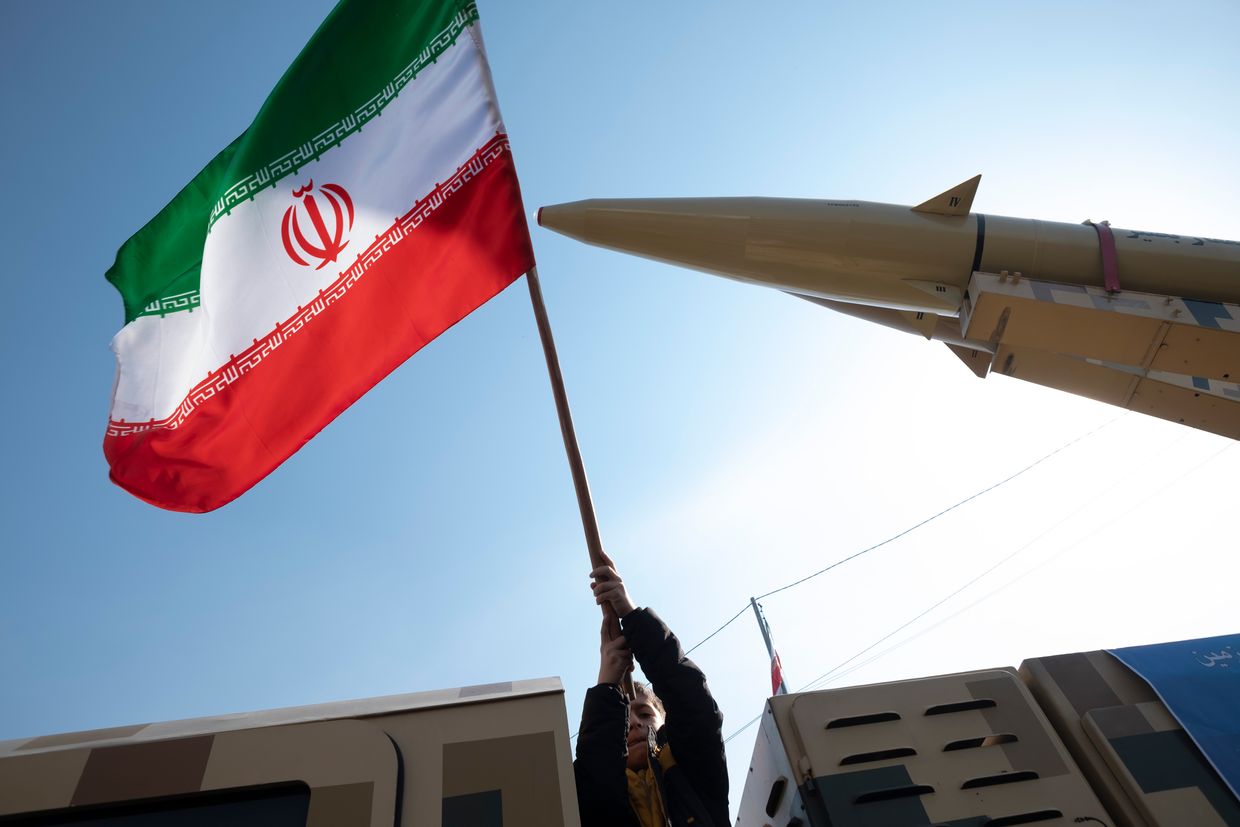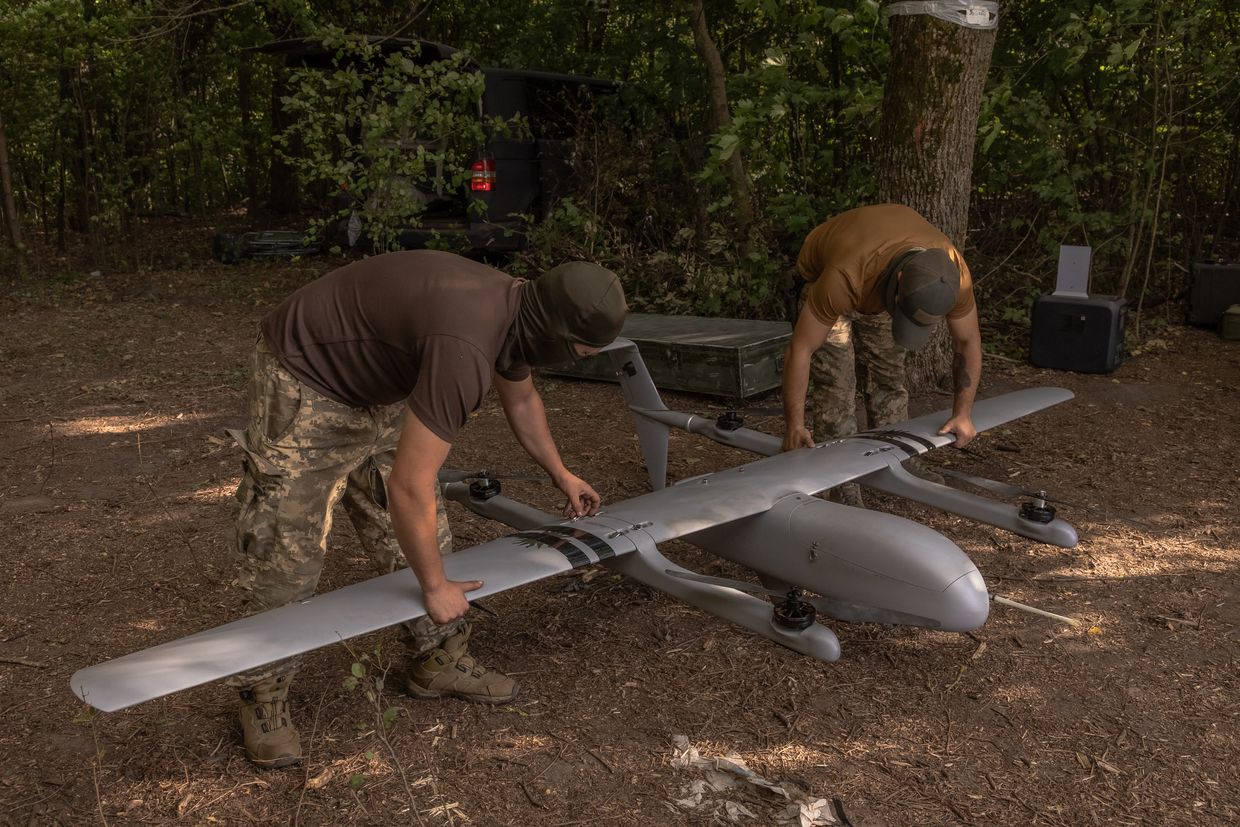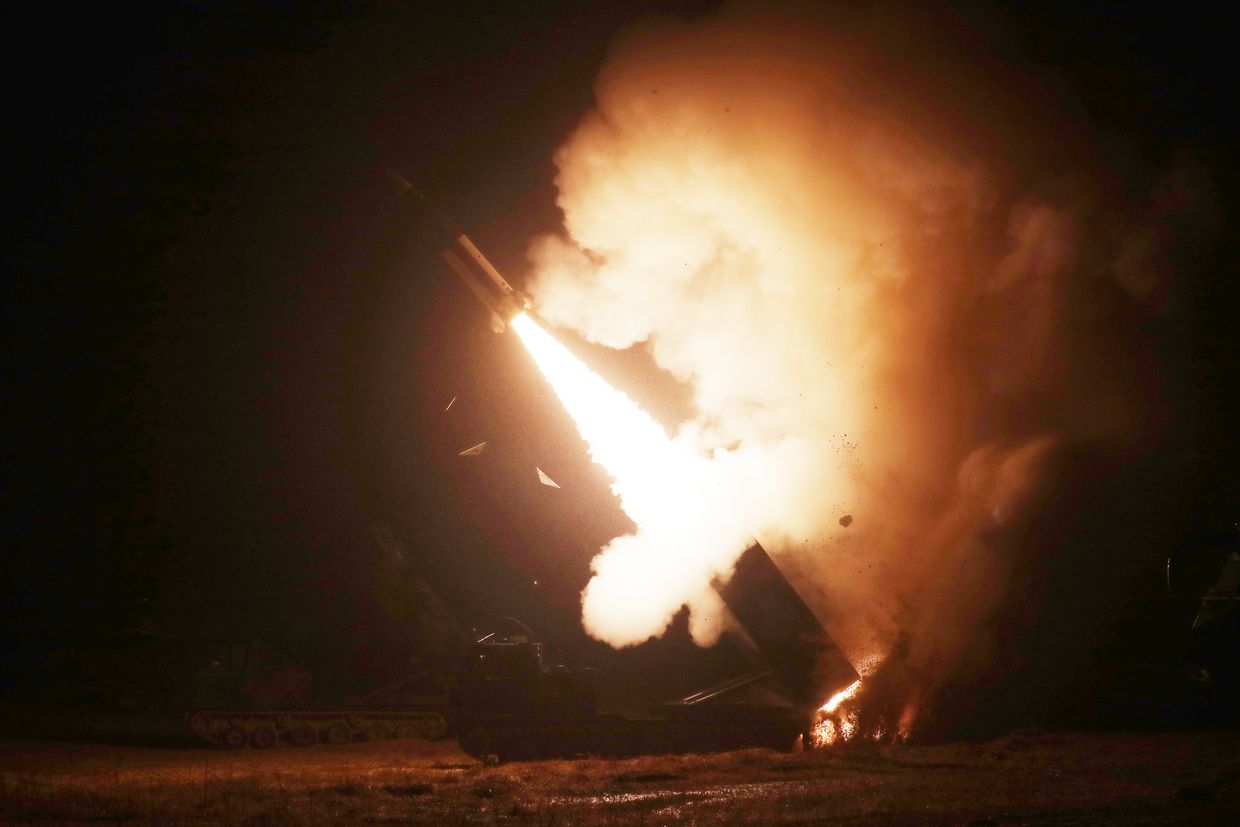
Arms depot in Russia's Tver Oblast built to withstand nuclear explosion heavily damaged by Ukrainian drones
A screenshot from a video purportedly showing the moment an ammunition depot in Tver Oblast, Russia, explodes on Sept. 18, 2024. (Olexander Scherba / X)
Overnight, Ukrainian drones attacked one of the largest arsenals in Russia, causing a powerful detonation in the town of Toropets in Russia's Tver Oblast, a source in the Security Service of Ukraine (SBU) told the Kyiv Independent.
Back in 2018, the Russian Defense Ministry bragged that this facility would be prepared to withstand even a nuclear explosion. Six years later, the claim was proven to be false.
According to the SBU, the arsenal stored ballistic missiles, including Iskanders, anti-aircraft missiles, artillery ammunition, and KAB guided bombs.
The attack "literally wiped off the face of the earth a large warehouse of the main missile and artillery department of the Russian Defense Ministry," the SBU source said.
Russia's largest arms depot
The construction of the arsenal, controlled by the Main Missile and Artillery Directorate, began in 2015 in the town of Toropets, located 480 kilometers north of Ukraine.
The construction was part of a 2012 government program set to improve Russia's storage of missiles, ammunition, and explosives. According to Russia's Defense Ministry, the program, worth 90 billion rubles (nearly $980 million), called for 13 modern arms depots to be built.
The construction in Toropets, a town of 11,000 people, was to open in October 2018 in compliance with all modern international security standards.
"The arsenal ensures safe and secure storage, protects (weapons) from aerial and missile strikes and even from the damage of a nuclear explosion," then-Deputy Defense Minister Dmitry Bulgakov said in 2018.
"If you compare present arsenals with what they used to be – storage in open areas and wooden storage facilities – and what they are today in concrete storage facilities, the difference is roughly the difference between walking around in body armor that protects you from being hit by bullets and shrapnel, or walking around without body armor," Bulgakov said.
Bulgakov was arrested in July 2024 following corruption allegations. He was one of five top Defense Ministry officials arrested between April and July amid the change in the ministry's leadership.
How did the Ukrainian forces hit the arsenal in Russia's Tver Oblast?
Tver Oblast Governor Igor Rudenya said on Sept. 18 that a fire broke out in Toropets due to the drone's debris fall, but the situation was "under control." An evacuation from Toropets to the neighboring settlement of Zapadnaya Dvina was ordered.
Rudenya did not specify the location of the drone crash or the damage it caused. Meanwhile, the Russian Defense Ministry, in its report on nighttime drone attacks, did not mention the strikes against Tver Oblast.
Yet the source in the Security Service of Ukraine (SBU) told the Kyiv Independent that a "very powerful detonation" occurred, and the affected area was 6 kilometers (3.7 miles) wide. NASA satellites also recorded a surge in thermal activity in Tver Oblast, where the 107th arsenal of the Main Missile and Artillery Directorate is located.
"The arsenal seems to have been built correctly, with bunkered storage facilities that can hold up to 240 tons of ammunition each," Serhiy Zgurets, military expert and CEO of the Ukrainian media Defense Express, told the Kyiv Independent.
"This is supposed to help prevent fire from spilling over from one storage facility to another, but it does not protect these structures from chain detonation," Zgurets added.
The expert assumes that two factors could have influenced the chain detonation. According to Zgurets, the Russian military could have stored ammunition in the open, which made them very vulnerable to the attack. At the same time, he did not rule out the possibility that the Ukrainian drones could have been modified.
"The effectiveness of Ukrainian drones has probably increased, as they may have received warheads that can pierce the ceilings of storage facilities," Zgurets said.
In total, about 30,000 tons of ammunition were stored in the arsenal in Toropets, which could have been enough to conduct attacks for months, according to the expert.
Russia most likely stored 122 mm Grad ammunition, 82 mm mines, and missiles for Buk medium-range surface-to-air missile systems, among other munitions, according to Zgurets.
Despite the successful attack on Toropets, Zgurets warned against underestimating Russia's electronic warfare but says that there is still an "antidote" to it, as some Ukrainian drones have an inertial guidance system, which is not affected by electronic warfare.
Zgurets said that arms depots are among the highest priorities that must be protected by air defense.
And if Russian forces did not shoot down all the air targets again, this points to two factors: Ukraine could have used "technical tricks" to bypass air defense, or the attack was so massive that Russia simply could not protect all of its important targets, the expert said.














